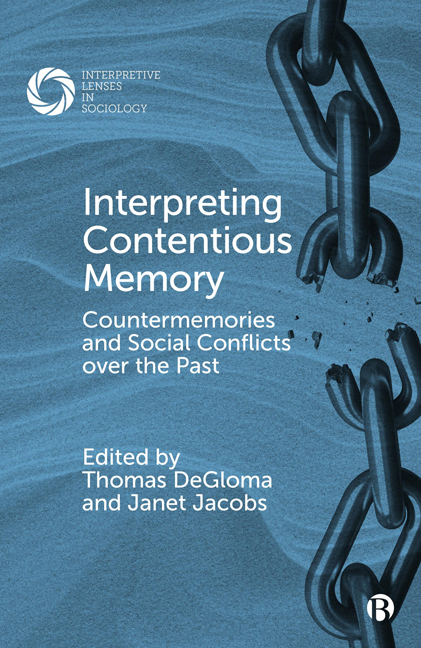Book contents
- Frontmatter
- Contents
- Series Editors’ Preface: Interpretive Lenses in Sociology – On the Multidimensional Foundations of Meaning in Social Life
- Notes on Contributors
- Acknowledgments
- 1 Introduction: Interpreting Contentious Memories and Conflicts over the Past
- PART I Interpreting Memories in the Social Dynamics of Contention
- PART II Racism, Exclusion, and Mnemonic Conflict
- PART III Genocide, Memory, and the Historicizing of Trauma
- Index
1 - Introduction: Interpreting Contentious Memories and Conflicts over the Past
Published online by Cambridge University Press: 20 January 2024
- Frontmatter
- Contents
- Series Editors’ Preface: Interpretive Lenses in Sociology – On the Multidimensional Foundations of Meaning in Social Life
- Notes on Contributors
- Acknowledgments
- 1 Introduction: Interpreting Contentious Memories and Conflicts over the Past
- PART I Interpreting Memories in the Social Dynamics of Contention
- PART II Racism, Exclusion, and Mnemonic Conflict
- PART III Genocide, Memory, and the Historicizing of Trauma
- Index
Summary
On June 27, 2015, ten days after white supremacist Dylan Roof shot and killed nine people attending a bible study group at the Emanuel African Methodist Episcopal Church in Charleston, South Carolina, Bree Newsome Bass, a 30-year-old Black woman, climbed a flagpole at the South Carolina statehouse in Columbia and removed the Confederate flag – a historic symbol that, at the time, had flown there for over 50 years. For some, including many South Carolina state officials at the time, the Confederate flag stands as a symbol of pride in the history of southern culture and values, one that distinguishes southern states from their northern counterparts. However, for many others it is one of the most recognizable symbols of slavery, oppression, and white supremacy in the US. Reflecting on her actions, Newsome Bass later stated that when she learned of the Charleston Church shooting, “all the ghosts of the past seemed to be rising” (Edwards, 2015). From her perspective, the contemporary shooting was not an isolated act of racist hate, but one connected to a long chain of events – an ongoing system of violence with deep roots. By targeting this flag, she linked the contemporary fight against systemic racism and violence against Black people in America to unresolved issues and events in US history and collective memory. Her protest was as much a confrontation focused on that past and its legacy as it was an expression of outrage spurred by a current tragedy. Similar confrontations focused on Confederate memorials, iconography, and symbols have occurred in the wake of contemporary acts of police violence, including the 2020 murder of George Floyd, linking this current and ongoing issue to the history of US slavery and racism (Ortiz and Diaz, 2020; Logan, 2021).
To more fully grasp the meaning of Newsome Bass's 2015 protest at the South Carolina statehouse, we must delve even deeper to further unpack and interpret the subversive semiotics and the multiple layers of contentious memory that underlie the act itself. Newsome Bass was not protesting a static symbol, but one that, in its contemporary context, became meaningful as an act of commemoration, and one that therefore expresses a contemporary social standpoint associated with a particular orientation to the past.
Information
- Type
- Chapter
- Information
- Interpreting Contentious MemoryCountermemories and Social Conflicts over the Past, pp. 1 - 26Publisher: Bristol University PressPrint publication year: 2023
